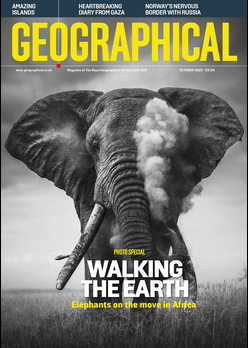

A bold new initiative aims to bring electricity to 300 million people by 2030, unlocking education, clean water, and opportunity across the continent

By Robin Hanbury-Tenison
Sub-Saharan Africa has a population of about 600 million. Almost half have no access to electricity. This is about 83% of those throughout the world without electricity. Compare that figure with the United Nations’ estimate that 92 percent of the global population now has such access.
So far, twenty-nine African countries have signed up to an initiative called Mission 300 with the goal of providing energy access to 300 million people by 2030. This is an ambitious joint effort led by the African Development Bank Group and the World Bank Group and it resonates with my belief that access to cheap or free electricity is the best way to save the world. Not only will it liberate masses from grinding poverty, but it will provide them with infinite opportunities, through access to the Internet, to gain an education; to stimulate them to remain at home; to develop their own countries rather than feel the need to emigrate; and, as I have suggested here before, to start to reduce population explosions through engendering prosperity.
Enjoying this article? Check out our related reads…
It will also reduce the need to generate electricity via CO2 emitting power stations run on coal, oil or gas, as much of the new electricity will come from massive PV arrays. Unfortunately, it will also involve the huge expansion of traditional grid connections, although this will be mitigated by decentralized renewable energy solutions, such as off-grid solar and mini-grids powered by solar panels.
Not as good, in my opinion, as my suggestion in the March 2025 issue of Geographical that the whole planet could now be efficiently supplied by wireless from light-weight PV panels in space, which would eliminate the need for power lines and provide a much cleaner energy pathway, but Mission 300 is probably cheaper in the short term and it does now seem to have a head of steam. The formal launch of Mission 300 was in January 2025 in New York, and it took a major step forward on September 25th this year, when seventeen more African countries signed up, bringing the total to twenty-nine.

Throughout Africa, limited electricity supply is one of the main obstacles to development and, co-incidentally, one of the main causes of pollution. Many still rely on diesel generators and even more use charcoal from the diminishing stands of forest, which often involves travelling long distances to collect the firewood before releasing smoke and greenhouse gasses into the atmosphere when it is used for cooking and heating.
In Sub-Saharan Africa, four out of five people still cook with wood and biomass and it has been estimated that nearly half a million premature deaths per year are linked to household pollution resulting from the lack of access to clean cooking facilities.
In much the same way, many hours are spent, again largely by women and children, walking to far off and often seriously polluted rivers and lagoons to gather water for drinking and cooking, which also results, according to the WHO, in over 700,000 deaths in Africa as a whole from unsafe drinking water, or 264 deaths per 100,000 in Western Sub-Sharan Africa, which has the highest death rate. Electric pumps, whether solar powered or linked to the grid, could bring clean water to the surface from aquifers, where vast water resources are held.
Converting from internal combustion driven methods of transport to electric vehicles, as is now happening throughout the rest of the world, is also severely inhibited in Africa by the lack of a reliable energy supply. Without electricity, charging infrastructure is limited and as those of us who have had electric cars for years know, ‘range concern’ is the biggest argument against changing to EV.
Sub-Saharan Africa faces major problems with bringing electricity to its people. Most countries have electrification rates below 30 per cent, with as low as 16 per cent in rural areas. South Africa, on the other hand, with over 86 per cent access has a major crisis with persistent power outages. Costs and the lack of trained and dedicated personnel, illegal connections as well as an ageing infrastructure that has been exacerbated by corruption on a massive scale, have brought South Africa’s sole power supplier to its knees, financially.

Eskom, an entity owned by the government has been rolling out its program to get all South Africans within reach of electricity. However, with less paying subscribers, Eskom has been hiking tariffs, pushing the dream of having a refrigerator or TV out of most people’s reach. All this is not helped by criminal syndicates operating within the utility and the fact that most of the grid is coal powered.
With over twenty of the top population growths in the world, Sub-Saharan Africa is in crisis. Throughout the region, millions in search of work migrate to the cities where those seeking employment erect shacks in sprawling settlements where there is little or no planning or access to water, sanitation or electricity. Rapid electrification will help them to make a good life there, rather than to seek it in Europe.
Mission 300 may not be the perfect solution, but something has to be done and it’s a lot better than drilling for yet more oil.




